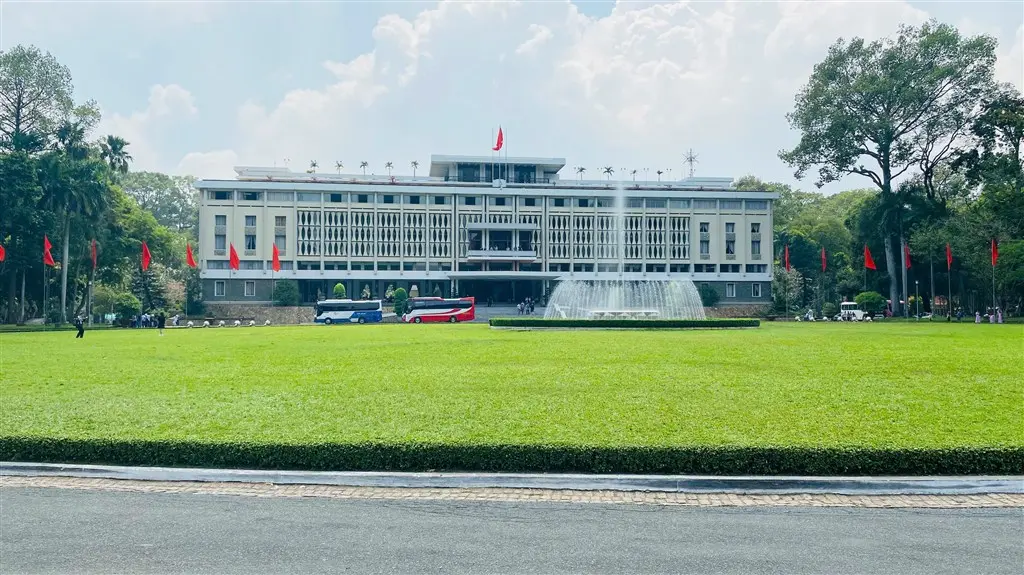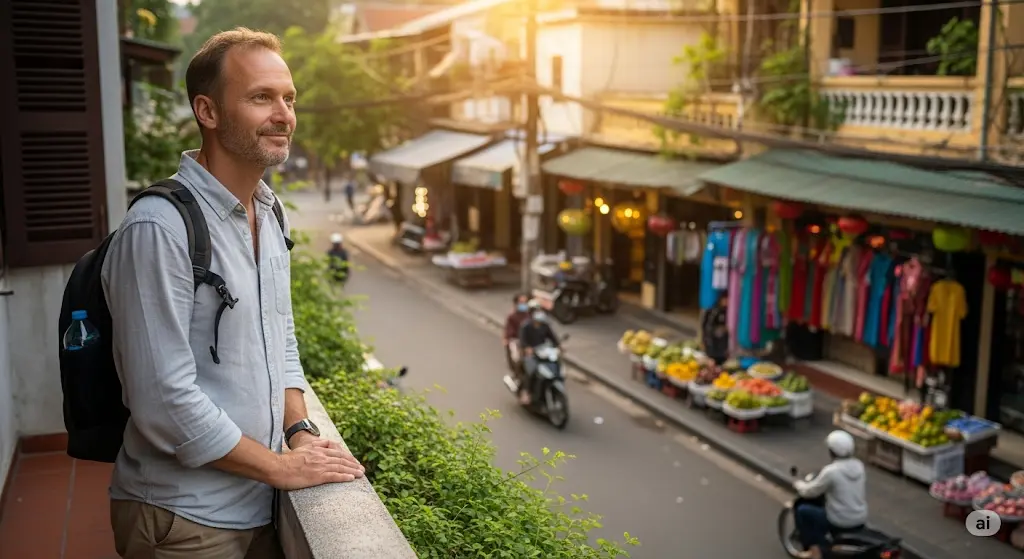Welcome to EssentialVietNamtravel.com. We are your guide to the vibrant culture of Vietnam. A significant part of this culture is its attire. Understanding vietnam attire offers a window into the country’s soul. It shows its history, values, and artistic heritage. This guide will explore the fascinating world of clothes in vietnam. We will cover everything from iconic traditional garments to practical advice on what to wear in vietnam today. The clothing in vietnam tells a story, and we are here to share it with you.
This journey will take us through the elegant Ao dai, the practical Non la, and the comforta ble Ao Ba Ba. We will discover the deep Cultural significance of these garments. You will learn how Vietnamese culture and Asian fashion intertwine in these unique designs. Whether you are planning a trip and wondering what clothes to wear in vietnam, or simply curious about Southeast Asian garments, this guide provides comprehensive insights. We will explore how Traditional clothing remains a vibrant part of modern life. We will also touch upon traditional vietnamese wedding attire and vietnamese clothing for lunar new year.
Planning Your Vietnam Adventure?
Find the best flight deals to explore Vietnam’s vibrant culture and stunning landscapes!
Understanding Traditional Vietnamese Attire: A Cultural Introduction to Key Garments
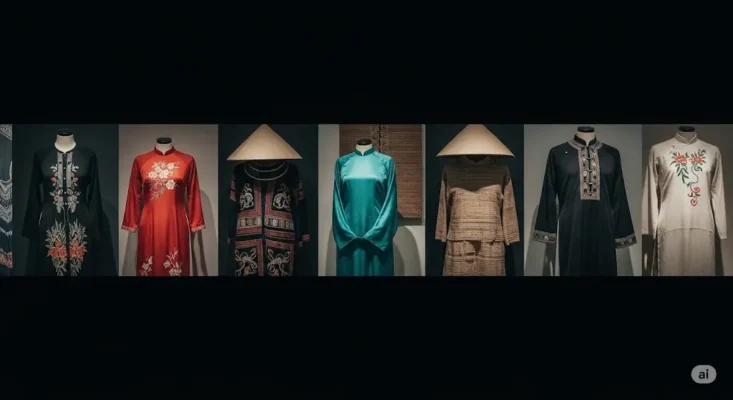
Traditional vietnamese clothing is more than just fabric stitched together; it is a narrative of the nation. Each thread in vietnam attire weaves a tale of history, regional identity, and the daily lives of its people. Vietnamese culture places great emphasis on attire, seeing it as a reflection of respect, occasion, and social standing.
This Traditional dress is a cornerstone of Asian fashion in the region, showcasing a unique blend of practicality and aesthetic appeal. When you explore Cultural garments from Vietnam, you are looking at centuries of artistic evolution and adaptation. These pieces are not merely historical relics; many are still worn, cherished, and form an integral part of the National costume identity.
The diversity within Ethnic clothing across Vietnam is vast. While some garments are recognized nationwide, many regions and ethnic groups boast their own distinctive styles, materials, and motifs. This Attire reflects cultural identity in profound ways. For instance, the clothing worn in the mountainous north differs significantly from that in the Mekong Delta, influenced by climate, available resources, and local customs.
Vietnamese attire holds deep cultural value, often passed down through generations. Understanding this context enriches any experience of the country. It helps visitors appreciate the nuances of social interactions and the importance of events. When considering what clothes to wear in vietnam, especially if attending cultural events or visiting sacred sites, awareness of traditional expectations for attire in vietnam is beneficial.
The history of vietnamese traditional dress is a rich tapestry, showing influences from various dynasties and interactions with neighboring cultures, yet always maintaining a distinctly Vietnamese character. This introduction aims to help you Learn about traditional Vietnamese clothing, setting the stage for a deeper appreciation of specific garments.
The Ao Dai: Exploring Vietnam’s Iconic National Costume and Its Deep Significance
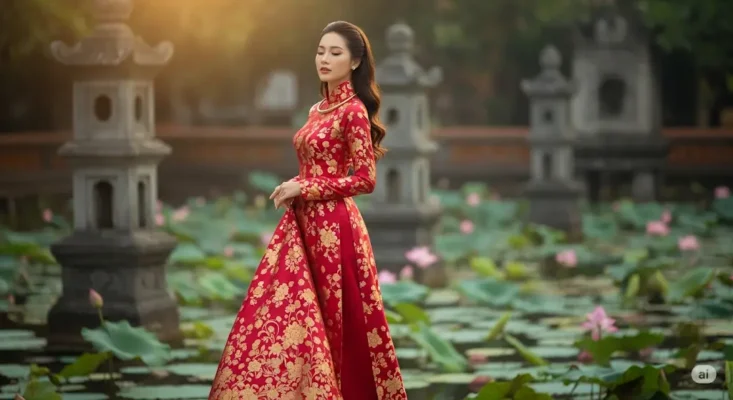
The Ao dai stands as the most recognizable symbol of vietnam attire. It is more than just a piece of clothing; it is an emblem of Vietnamese grace, elegance, and national pride. This iconic National costume is celebrated for its Distinctive silhouette (Ao Dai), a tight-fitting tunic worn over loose trousers. The Ao Dai symbolizes Vietnamese femininity and modesty, yet it also conveys a subtle allure.
Its Historical evolution spans centuries, adapting from more cumbersome aristocratic robes to the sleek, modern form recognized today. Originally worn by both men and women, the contemporary Ao dai is predominantly associated with women, though men’s versions are worn on formal occasions.
The Material choice for an Ao dai is crucial, with Silk being the most prized. Ao Dai,Material,Silk is a common and revered combination, lending the garment its flowing quality and luxurious feel. Silk fabric drapes beautifully, enhancing the wearer’s movements. While White is a classic Ao Dai,Color,White, representing purity and youth often seen in schoolgirl uniforms, Ao Dai come in a spectrum of colors and patterns.
These can signify age, marital status, or the specific occasion. For example, vibrant, intricately embroidered Ao Dai are common for weddings or Tet holiday celebrations. The Ao Dai,Feature,High collar is a characteristic element, contributing to its dignified appearance. The tunic itself is long, often reaching Ao Dai,Length,Ankle-length, splitting into two panels at the waist.
Ao Dai,Worn by,Women of all ages, it is a versatile garment, suitable for everything from daily wear in some professions to high-profile events. The Elegance and Modesty it embodies are core to its enduring appeal. Many modern designers continue to create modern ao dai designs for women, experimenting with new fabrics, patterns, and cuts while respecting the garment’s traditional essence.
The Lotus motif, a symbol of purity and beauty in Vietnamese culture, is a frequent decorative element, often realized through delicate Embroidery. The Ao Dai is an iconic national symbol, cherished by Vietnamese people and admired globally. Its Cultural significance is immense, representing the spirit of Vietnam.
Beyond the Ao Dai: Discovering the Non La, Ao Ba Ba, and Other Distinctive Vietnamese Clothing
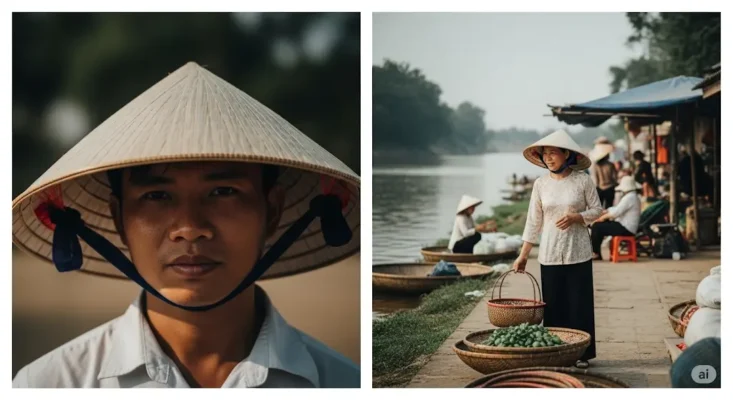
While the Ao Dai often takes center stage in discussions of vietnam attire, several other garments play crucial roles in the daily lives and cultural expression of the Vietnamese people. Understanding these pieces provides a fuller picture of clothes in vietnam and how Traditional clothing adapts to different needs and environments. Among these, the Non la (conical hat) and the Ao Ba Ba are particularly noteworthy for their practicality and widespread use.
The Non la is an instantly recognizable symbol of Vietnam, as iconic in its own way as the Ao Dai. This simple conical hat, traditionally made from Non La,Material,Palm leaves, is a marvel of functional design. Its primary Non La,Function,Sun protection is vital in Vietnam’s tropical climate, shielding the wearer from scorching sun and sudden downpours. The Non La,Shape,Conical, is not accidental; it allows rain to run off easily and air to circulate. Beyond its weather-protective qualities, the Non La is incredibly versatile.
It can be used as a makeshift basket, a fan, or even a bowl to drink water. The Non La,Associated with,Rural life, it is a common sight in rice paddies and local markets, worn by people from all walks of life. Often, the Non la complements Ao Dai, creating a classic and elegant Vietnamese image, especially for Vietnamese women.
Another significant item of Vietnamese clothing is the Ao Ba Ba. This comfortable, loose-fitting tunic and trouser set is particularly prevalent in Ao Ba Ba,Region,Southern Vietnam, especially in the Mekong Delta. Typically made from simple, breathable fabrics like cotton or, for dressier versions, Ao Ba Ba,Material,Silk, the Ao Ba Ba is valued for its practicality and ease of movement, making it ideal for working in the fields or navigating daily life.
Unlike the more formal Ao Dai, the Ao Ba Ba is everyday wear, embodying a sense of relaxed simplicity. It is worn by both men and women. These garments showcase the practical side of Traditional dress in Southeast Asian garments, designed for comfort and utility in a warm climate. The Lotus motif, while more common on Ao Dai, can sometimes be found on more decorative Ao Ba Ba as well. Together, the Ao Dai, Non La, and Ao Ba Ba offer a glimpse into the diverse and functional world of Ethnic clothing in Vietnam.
Vietnamese Attire for Traditional Festivals and Special Occasions: What People Wear
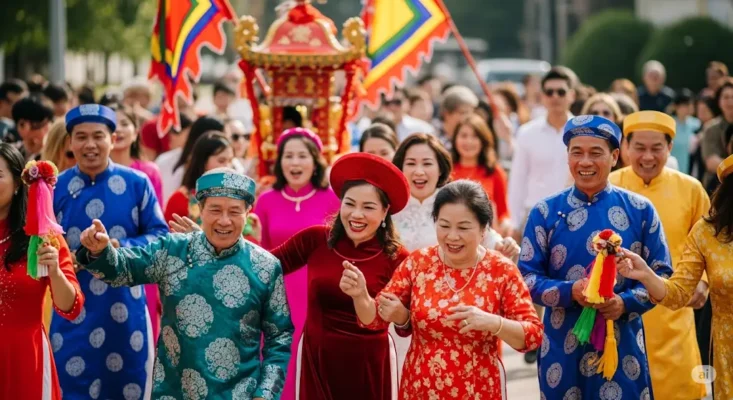
Traditional festivals and special occasions are pivotal in Vietnamese culture, and vietnam attire plays a significant role in these celebrations. The choice of clothes in vietnam for such events is often steeped in tradition, symbolism, and a desire to show respect. Understanding what people wear in vietnam during these times offers insight into the country’s values and customs. From the vibrant nationwide celebration of Tet holiday (Lunar New Year) to the solemnity of weddings and local village festivals, specific garments are chosen to mark the importance of the day.
The Tet holiday is perhaps the most important festival, and new clothes for vietnam’s new year are a significant tradition. It symbolizes new beginnings and good fortune. The Ao Dai is a popular choice for both men and women during Tet, often in bright, auspicious colors. Red and gold are particularly favored, believed to bring luck and prosperity. Vietnamese clothing for lunar new year reflects a sense of renewal and respect for ancestors. Families often visit temples and pagodas, and wearing traditional, respectful attire in vietnam is customary.
Weddings are another occasion where traditional vietnamese wedding attire takes center stage. Brides and grooms often wear elaborate Ao Dai, rich in color and intricate Embroidery. The Ao Dai,Occasion,Wedding is a powerful symbol of cultural heritage. Guests attending a Vietnamese wedding also dress respectfully. While not always required to wear an Ao Dai, smart, modest dresses for vietnam weddings or suits are common.
Understanding Vietnamese wedding guest attire etiquette is important if you are invited to such an event. Symbolic colors also play a role in wedding attire, though modern interpretations allow for more flexibility. Beyond these major events, many local festivals and Traditional festivals have their own specific dress codes or customary garments, reflecting Regional variations in Traditional clothing. These Festivals necessitate specific garments, and the Cultural significance of this Ceremonial use of attire is deeply ingrained in society. The Handmade quality of these special occasion garments often highlights Traditional craftsmanship.
The Artistry in Vietnamese Garments: The Importance of Silk Weaving, Embroidery, and Material Choices
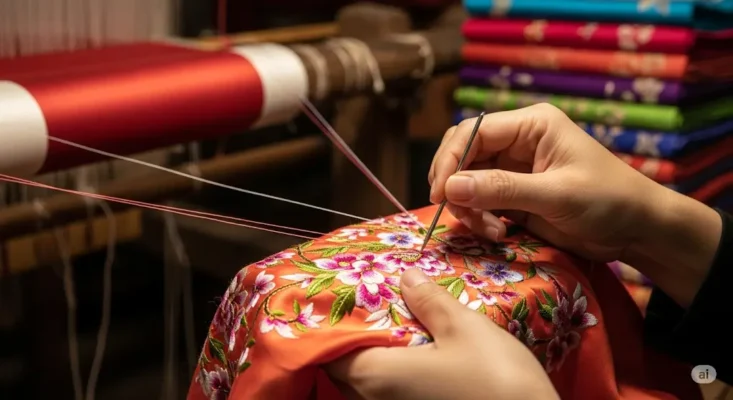
The beauty of vietnam attire lies not only in its design but also in the exquisite artistry involved in its creation. The choice of Materials and textiles, the intricate Design elements, and the meticulous Traditional craftsmanship all contribute to the unique charm of Vietnamese garments. Silk weaving and Embroidery are two particularly prominent crafts that elevate clothes in vietnam from mere apparel to works of art. The Textile history of Vietnam is rich, with techniques passed down through generations, and Craftsmanship is highly valued.
Silk holds a special place in Vietnamese textile traditions. Ao Dai,Material,Silk is a testament to this, as silk’s natural luster, softness, and drape perfectly complement the flowing lines of this iconic garment. Silk weaving in Vietnam has ancient roots, with certain villages renowned for their unique silk production techniques for centuries.
Van Phuc silk village near Hanoi is one such famous center. Vietnamese silk is known for its quality and durability. The use of Silk as primary material in many traditional garments, especially the Ao Dai, underscores its cultural importance and how Silk enhances elegance. Beyond silk, other materials like cotton, linen, and traditional Brocade (especially among ethnic minority groups) are also used, each chosen for its specific properties and suitability for different types of Ethnic clothing.
Embroidery is another hallmark of Vietnamese artistry in textiles. Intricate patterns, often featuring symbolic motifs like the Lotus motif, dragons, phoenixes, and scenes from nature, are painstakingly stitched by hand onto garments. This Vietnamese Attire,Element,Embroidery adds depth, texture, and meaning to the clothing. The skill of Vietnamese embroiderers is renowned, and their work can transform a simple piece of fabric into a luxurious item.
Ancient weaving techniques and embroidery skills contribute significantly to the Cultural heritage of Vietnam. The Handmade nature of much of this work means that each piece can be unique. This dedication to detail and quality ensures that traditional vietnamese attire is not just worn, but cherished as a symbol of Elegance and cultural pride. Understanding these artistic aspects provides a deeper appreciation for the Traditional dress of Vietnam.
Modern Vietnamese Fashion: How Traditional Attire Influences Contemporary Styles and Where to Find Authentic Pieces
The landscape of vietnam attire is dynamic, with a fascinating interplay between deep-rooted Tradition and evolving Modern fashion. While iconic garments like the Ao Dai remain cherished symbols of Vietnamese culture, contemporary designers are constantly reinterpreting traditional elements for today’s world.
This fusion creates a vibrant fashion scene that honors the past while embracing the future. For visitors, understanding this blend is key, not only for appreciating local styles but also for knowing what to wear in vietnam comfortably and respectfully, and where to find authentic clothes in vietnam.
Many modern Vietnamese fashion designers draw inspiration from Traditional clothing. The distinctive silhouette of the Ao Dai,Style,Modern often appears in contemporary collections, perhaps with new cuts, fabrics, or patterns, but still echoing its inherent Elegance. Motifs from Embroidery, traditional color palettes, and techniques like Silk weaving are also incorporated into modern designs, creating pieces that are both innovative and unmistakably Vietnamese. This Modern adaptations ensures that Traditional attire is still relevant and continues to be a source of national pride.
For travelers wondering what clothes to wear in vietnam, practicality and respect are key. Vietnam’s climate varies, so consider the season.
- What to wear in vietnam in november (North): Cool, sometimes chilly. Layers, a light jacket.
- What to wear in vietnam in december / what clothes to wear in vietnam in january (North): Can be cold. Warm jacket, sweater. (South): Warm and dry.
- What to wear in vietnam in february / what to pack for vietnam in february (North): Still cool, transitioning. (South): Hot, dry.
- What to wear in vietnam in march (North): Warmer. (South): Very hot. Generally, lightweight, breathable fabrics like cotton and linen are excellent choices. While major cities are quite modern, when visiting temples, pagodas, or rural areas, it’s important to dress for vietnam modestly. This means covering shoulders and knees. So, while you might see shorts in vietnam, they are best for casual settings and beaches, not religious sites. The general dress code for vietnam leans towards conservative, especially outside tourist hotspots. Knowing how to dress in vietnam respectfully will enhance your interactions. Many travelers look for dresses for vietnam that are both stylish and practical.
If you wish to Purchase Vietnamese silk Ao Dai or other authentic clothing in vietnam, there are many options.
- Tailor Shops: For a custom-fit Ao Dai, visiting a tailor is highly recommended. Cities like Hanoi (especially Hang Gai Street, also known as Silk Street), Hoi An, and Ho Chi Minh City have numerous skilled tailors. You can choose your fabric (often beautiful Silk fabric), style, and have it made to your measurements. This is a great way to get an Ao Dai,Style,Modern or traditional.
- Ready-Made Shops: Many boutiques sell ready-to-wear Ao Dai and other Cultural garments. Quality and price can vary, so it’s good to shop around.
- Markets: Local markets can be a source for simpler traditional items like the Ao Ba Ba or Non La. When looking for where to buy ao dai in hanoi or elsewhere, consider the quality of the Silk and the craftsmanship of the Embroidery. Asking locals for recommendations can be helpful. Some may search for the Best places to buy Ao Dai online, but purchasing in person allows you to assess the quality and fit more accurately, which is important for such a significant piece of vietnam attire.
The enduring appeal of vietnam attire is a testament to its beauty, cultural depth, and adaptability. From the timeless Ao Dai to practical everyday wear and vibrant festival costumes, these garments offer a rich insight into Vietnamese culture and its artistic traditions. EssentialVietNamtravel.com hopes this guide has illuminated the diverse world of clothes in vietnam, helping you appreciate its heritage and choose your own outfits in vietnam with understanding and respect.

